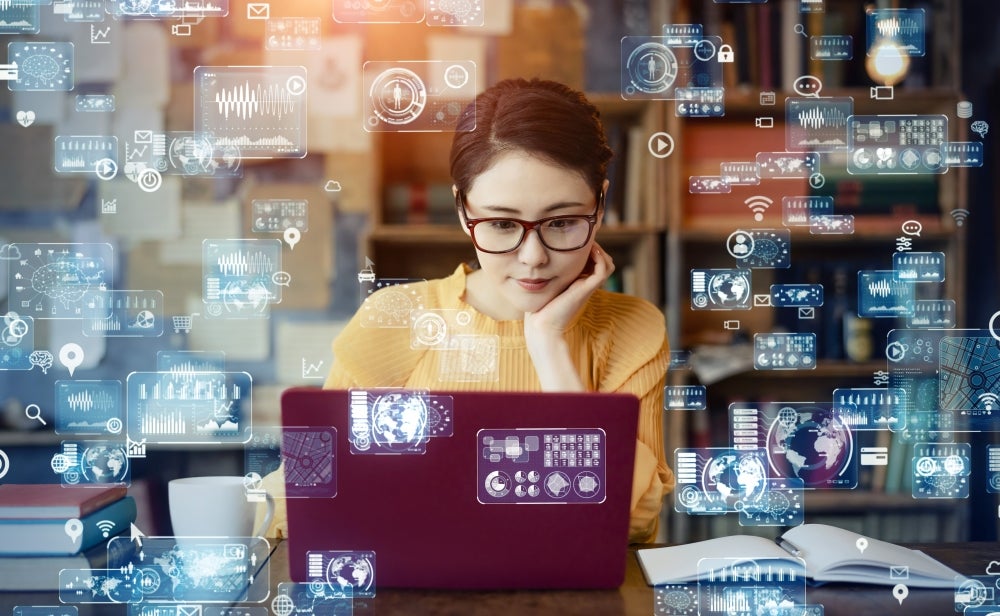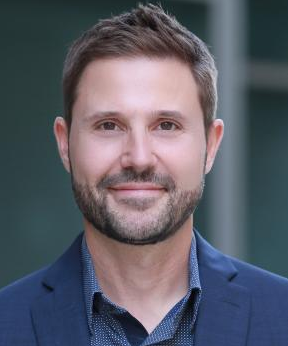
The Digital Mindset

The digital revolution is not only here, it’s here to stay, which causes some people to fear that to survive they will need to master exotic new skills. Even senior leaders of progressive companies who are re-tooling their strategies to compete in this environment do not always know what kind of knowledge or competencies they and their employees need to make those changes happen.
In a new book, “The Digital Mindset: What It Really Takes to Thrive in the Age of Data, Algorithms, and AI” (Harvard Business Review Press, 2022), Paul Leonardi, a professor in UC Santa Barbara’s Department of Technology Management, and his co-author, Tsedal Neeley, a business administration professor at the Harvard Business School, argue that developing a digital mindset is necessary to take full advantage of the new possibilities in the digital era.
That means “a new set of approaches that influence how people think and act in the digital world,” said Leonardi, who for nearly 20 years has focused his research on how organizations can innovate and evolve to improve the work of both management and team members. “If you don’t have the right mindset, you’re not going to understand or see opportunities for change.”
The authors write that a digital mindset consists of a set of approaches in three key areas: collaboration, computation and change. Most people already know what it means to work with others and they have a sense, even when working remotely, of how good collaboration looks. But in the digital era, it looks increasingly different.
“A huge part of collaboration in the digital era is knowing how to work effectively not just with other people, but also with machines,” Leonardi said. “How do you know whether you can trust the predictions the machine is giving you, or how do you give commands to get machines to do what you want them to do? “
Just as important in the digital age, the authors write, is developing an approach to computation, which is about working with data. One of the book’s big points is that data are not collected but produced and are, therefore, social constructs.
“We’re in a world where decisions are based increasingly on data. All you have to do is think about the ads you get when searching on Google, which are happening because of really fine-grained machine learning algorithms that constantly turn data into predictions about what we are likely to buy at a particular moment,” explained Leonardi. “In order to understand whether a business can act on a prediction or if a prediction is going to be useful, we need to have some rudimentary statistical knowledge. Interpreting statistics and asking the right questions of analyses have to be part of the approach to computing.”
The final requirement for developing a digital mindset, the book argues, is to embrace change. The authors contend that there are no periods of stasis in the digital world, only a constant process of change or, as they call it, "transitioning."
“We’re always transitioning from one set of practices or business models to the next, and that’s in large part because of all the new data that are being collected, produced and analyzed through digital technologies,” he said. “And because we’re in this constant process of change, it’s extremely important to develop an ethos of experimentation and to get feedback on what’s working and what’s not.”
Leaders must help employees develop the skills they need to embrace change, too, Leonardi added, and should work to create a culture that’s receptive to change and not looking forward to a time when things calm down — because they won’t. How to do these things are two topics covered extensively in “The Digital Mindset.”
To write the book, the authors drew on interviews and surveys of more than five thousand people, as well as on hundreds of hours spent observing people using digital technologies in the workplace. They looked at people who had a wide variety of digital skills in different industries, and who were at various career stages, in order to identify those who had developed a digital mindset. They extracted the necessary skills that help people to see, think and act differently — the ingredients for a digital mindset.
“We have found that to be a competent citizen in the digital world requires only about 30% fluency in a number of areas that we outline in the book,” said Leonardi, referring to what the authors call the “thirty-percent rule.” He uses the analogy of learning a foreign language. Research shows that a person needs about twelve thousand words to have mastery of a language and communicate fluently. But to be competent enough to work with others who speak another language requires only 30% of that, or about four thousand words.
“I think that analogy is helpful for thinking about where we are in the digital economy. The book is designed to help give people that thirty percent,” he explained.
The goal of the book, Leonardi said, is to translate his and Neeley’s academic research for a wider audience, so that readers can develop a new set of practical skills and gain confidence, an awareness of the areas where they need to acquire more knowledge, and an ability to see more possibilities for themselves and their companies.
“Tsedal and I never planned to write this book; however, in our teaching, consulting and speaking gigs, we both kept hearing the same thing over and over again, which is, ‘If I’m going to make a digital change happen in my organization, then all of my employees will need to be digitally competent, and I’m not sure how to do that,’” he said. “That’s what compelled us to write the book that no one else was writing.”
Leonardi believes that the book exemplifies the relevance and importance of UCSB’s Department of Technology Management, which recently became the sixth department in the College of Engineering and provides a bridge between engineering and the world of work.
“The Technology Management Department helps people build a digital mindset to make the right organizational changes and to utilize and implement new technologies,” he said. “We also teach students about the kinds of strategies and organizational activities that are best suited for applying the technologies and innovations in basic science that are being developed at great research institutions like UCSB.”
The 272-page book is now available through various online retailers, including Amazon, Apple Books and Barnes & Noble.
Currently, Leonardi is investigating what he calls “digital exhaustion,” which existed even before the COVID-19 pandemic: a condition in which people experience high levels of physical, emotional and social fatigue because of increased digital technology use. He is working to understand the forces behind the phenomenon and how people can move past it to become more productive and happier.



